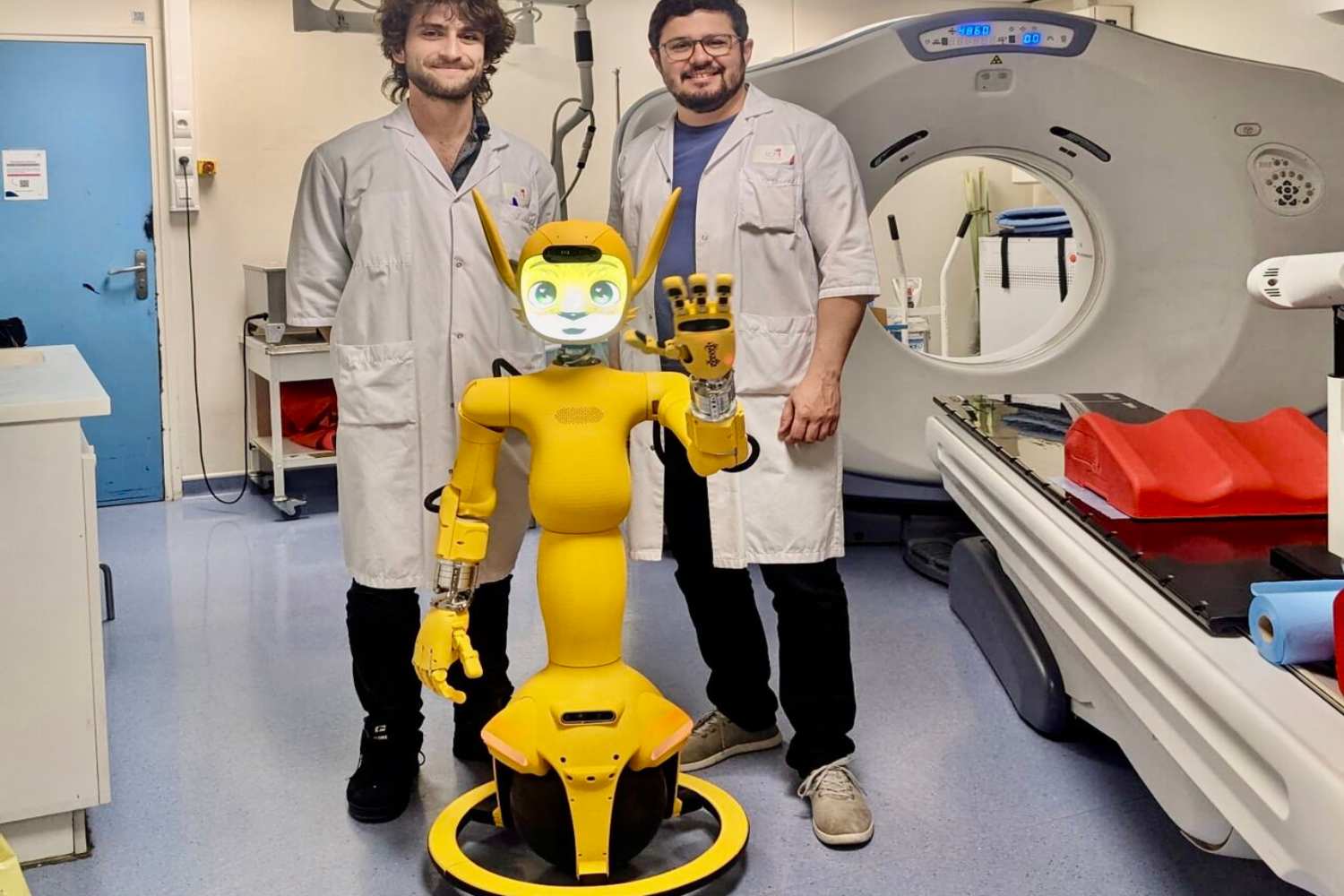At ICM Montpellier, a humanoid robot named Miroki is transforming pediatric cancer care with empathy, presence, and innovation.

@SIRIC Montpellier Cancer/Linkedin
At the Montpellier Cancer Institute (ICM), something quietly extraordinary has just begun. A new member has joined the pediatric radiotherapy unit—not a doctor, not a nurse, but a humanoid robot named Miroki. Designed specifically to support children undergoing cancer treatment, Miroki isn’t just a feat of technology—it’s a little beacon of empathy wrapped in synthetic skin.
Developed by Enchanted Tools and introduced thanks to the backing of SIRIC Montpellier Cancer, this unique prototype is unlike anything currently used in clinical settings. It’s not just a piece of hardware placed in a medical ward—it’s been given a role, a purpose, and even, in a way, a soul.
More than a machine: technology meeting tenderness
Miroki has been integrated directly into the pediatric radiotherapy department, not to replace humans, but to comfort them—specifically, the youngest and often most frightened among them. Children facing radiotherapy frequently go through emotionally grueling sessions, sometimes alone due to the nature of the treatment environment.
Enter Miroki: affectionate, interactive, and intentionally designed with a warm, non-threatening personality. It joins children not just during consultations, but also in the treatment room itself—those sterile, humming spaces where human presence is restricted by radiation safety protocols. Here, the robot becomes a reassuring presence, helping to reduce anxiety, fear, and the overwhelming sense of isolation that often accompanies pediatric cancer care.
A doctor’s insight sparks a bold experiment
This initiative was born from the vision of Dr. Julien Welmant, a pediatric radiation oncologist at ICM. “La quotidianità con bambini malati porta spesso con sé emozioni di isolamento e timore,” he explains—daily life with sick children often comes with emotions of isolation and fear. His hope? That Miroki would become an innovative response to emotional distress, ensuring that no child feels alone in the treatment room.
Beyond empathy: science steps in
This isn’t just a feel-good story, though it certainly feels good. The introduction of Miroki also marks the beginning of a rigorous scientific trial. Researchers will assess how the robot affects human behavior, focusing on the emotional and psychological quality of the therapeutic experience for children. At the same time, scientists will examine how Miroki handles repeated radiation exposure—a key question before it can become a permanent fixture in clinical oncology.
David Azria, scientific director of the SIRIC Montpellier Cancer consortium, is coordinating the study, making sure this blend of human sensitivity and robotic precision stands on firm scientific ground.
A community effort with famous friends
No innovation like this happens in a vacuum. Miroki’s journey to the hospital ward has been powered by generosity, particularly from Sandrine Moustardier, along with strong support from Laeticia Hallyday and her nonprofit, La Bonne Etoile. The two mobilized local communities to help fund the acquisition of the first prototype, showing that compassionate technology can unite people across disciplines and backgrounds.
Now, a second phase begins: fundraising to expand the interactive ecosystem around Miroki and fuel ongoing research into its efficacy.
A vision for tomorrow’s oncology
For Marc Ychou, ICM’s general director, Miroki is more than a tool—it’s a symbol of the future. “This initiative embodies the spirit of the MedVallée vision,” he explains, referring to Montpellier’s broader goal of integrating cutting-edge technologies into medical care. With Miroki, that vision takes shape: a future where tech is not cold or distant, but warm, personal, and devoted to human healing.
Sources: SIRIC Montpellier Cancer/ LinkedIn
